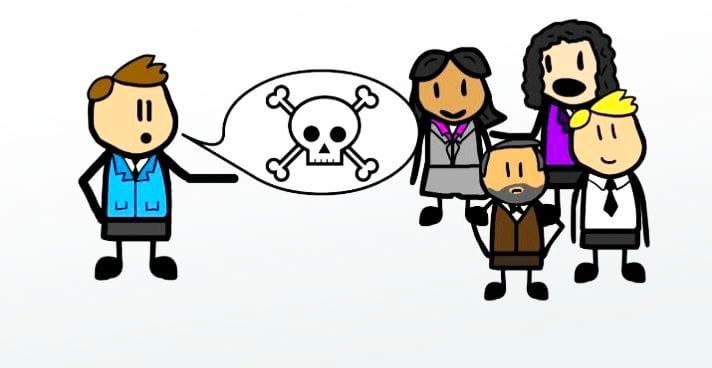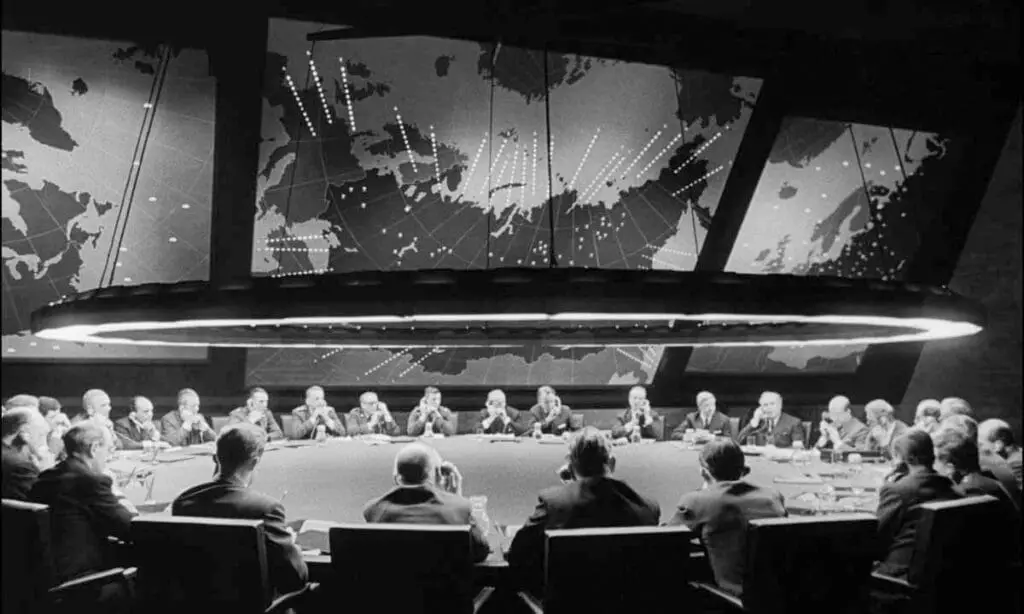Coercive Power / Dimensions : Meaning and Implications
Coercive Dimension : Meaning and Implications
The coercive dimension refers to the use of force, compulsion, or threats by the state or other actors to achieve compliance, maintain order, or assert authority. In political science, this dimension is primarily associated with how power is exercised through law enforcement, military force, and punitive measures to maintain control, ensure security, and protect sovereignty.
Coercion can be seen in both internal governance (through policing, law enforcement, and legal penalties) and external relations (through military force, diplomacy backed by threats, or sanctions). While coercion is often necessary for maintaining social order and national security, its excessive or unjust use can lead to authoritarianism, suppression of dissent, and violation of rights.

1. Features of the Coercive Dimension
a. State Monopoly on Violence
One of the key features of modern states is the monopoly on legitimate use of force. This means that only state institutions, such as the police and military, have the legal right to use coercive force to maintain law and order, defend national security, and enforce laws.
b. Law Enforcement
- Police Forces: The police are the primary agents of the coercive dimension within a state. They are responsible for enforcing laws, maintaining public order, preventing crime, and protecting citizens. Police forces use coercive power to ensure compliance with the law through arrests, detentions, and, when necessary, the use of force.
- Judicial System: The judiciary, through courts, plays a role in the coercive dimension by imposing legal penalties, such as fines, imprisonment, or even capital punishment, for violations of the law. Courts exercise coercive power to ensure that legal judgments are enforced.
c. National Defense
- Military Forces: The military represents the state’s coercive power in the context of national defense and foreign relations. The armed forces use coercion to defend the country against external threats, maintain territorial integrity, and engage in warfare when necessary.
- Internal Security Forces: In addition to external defense, paramilitary and specialized internal security forces may be used to suppress insurgencies, combat terrorism, or quell civil unrest. Examples include India’s Central Reserve Police Force (CRPF) and Border Security Force (BSF).
d. Punitive Measures and Sanctions
- Penalties and Punishments: Governments use coercion through punitive measures, such as fines, imprisonment, and other forms of legal punishment. For example, criminal penalties are designed to deter individuals from violating laws and ensure that wrongdoers face consequences.
- Economic Sanctions: In international relations, states use coercion through economic sanctions, where trade restrictions, financial penalties, or asset freezes are imposed to compel other states or entities to comply with international norms or political demands.
e. Surveillance and Control
- Surveillance Mechanisms: The coercive dimension often includes surveillance mechanisms to monitor citizens’ activities for the purpose of maintaining security. Technologies like mass surveillance, censorship, and intelligence gathering are tools of coercion used to prevent crime or suppress dissent.
- Coercion through Legislation: Coercive laws, such as emergency laws or national security acts, grant the state extraordinary powers to detain, search, or limit freedoms in situations deemed threatening to national stability. Examples include the Patriot Act in the U.S. or National Security Act (NSA) in India.

2. Coercive Dimension in Governance
a. Maintaining Law and Order
Governments rely on coercive mechanisms, such as police and judiciary systems, to ensure public order. Law enforcement agencies are empowered to use physical force or the threat of force to compel individuals to obey laws and regulations. The goal is to maintain social peace, prevent chaos, and protect property rights and citizens’ safety.
b. National Security and Counterterrorism
National security is another domain where the coercive dimension is prominent. States may employ coercion through military action or special operations to combat terrorism, insurgencies, and external threats. Counterterrorism measures often involve surveillance, detention of suspects, and sometimes preemptive strikes.
c. Imposition of Laws and Policies
The state uses coercion to implement and enforce laws, whether related to taxes, labor regulations, or civil liberties. In cases of resistance or non-compliance, the state can impose fines, confiscate property, or detain individuals. For example, non-compliance with tax laws may result in financial penalties or legal action.
d. Use of Force in Civil Unrest
During times of civil unrest, protests, or strikes, governments may deploy police or military forces to restore order. This involves the use of coercion to disperse crowds, arrest leaders, or impose curfews. While necessary to prevent violence, excessive use of force can lead to human rights violations and political repression.
3. Coercive Dimension in International Relations
a. Military Force
- War and Defense: Military coercion is most evident in times of war or defense operations. Countries use military force or the threat of force to protect national interests, assert territorial claims, or deter aggressors.
- Military Interventions: Coercive interventions, such as military occupations, peacekeeping missions, or humanitarian interventions, may occur when the international community or powerful states seek to influence or control the political outcomes in other nations.
b. Diplomacy and Economic Sanctions
- Sanctions as Coercion: Countries impose economic sanctions or trade restrictions to exert pressure on other nations to change their policies or behavior. For example, sanctions against countries like North Korea or Iran are used to coerce compliance with nuclear non-proliferation agreements.
- Military Alliances and Deterrence: Military alliances, such as NATO, often involve a coercive element where member states deter aggression by collectively threatening retaliation against any external threats.
4. Positive and Negative Aspects of the Coercive Dimension
Positive Aspects
- Maintenance of Order: Coercion is necessary for maintaining law and order, preventing chaos, and ensuring compliance with the rule of law. Without the state’s coercive powers, society could fall into disorder.
- National Security: The state’s use of coercive force is crucial in defending its citizens against external threats, such as invasions, terrorism, or internal insurgencies. The coercive dimension ensures the protection of sovereignty and national integrity.
- Enforcement of Justice: Coercion allows for the enforcement of justice through courts and legal systems. Penalties for crimes ensure accountability and deterrence against illegal activities, contributing to social peace and security.
Negative Aspects
- Suppression of Civil Liberties: Excessive use of coercion by the state can lead to violations of human rights and suppression of civil liberties. For example, authoritarian regimes often use coercion to silence dissent, restrict free speech, and prevent political opposition.
- Authoritarianism and Repression: When the state overly relies on coercion, it may shift toward authoritarianism. Such regimes often use the police, military, and surveillance systems to intimidate and control citizens, preventing democratic participation.
- Social Unrest: Coercive measures, if perceived as unjust or excessive, can provoke resistance and social unrest. For instance, heavy-handed tactics during peaceful protests can lead to public outrage, further destabilizing the situation.
5. Balancing Coercion and Consent
A well-functioning state must balance coercion with consent. While coercive measures are necessary to enforce laws and maintain security, they must be grounded in legitimacy and public trust. Governments that rely excessively on coercion without securing popular consent risk alienating citizens and fostering opposition.
Democratic Accountability
- In democratic societies, coercion must be regulated by rule of law, transparency, and accountability to prevent abuse of power. Mechanisms like judicial oversight, independent human rights commissions, and free press are essential to ensure that the state’s use of coercion remains within legal and ethical bounds.
Legitimacy of Laws
- For coercive measures to be accepted, laws must be seen as legitimate and fair. If citizens view laws as just and designed for the common good, they are more likely to comply voluntarily, reducing the need for coercion.
Conclusion
The Coercive Dimension of governance is essential for maintaining order, enforcing laws, and ensuring national security. However, its use must be balanced with respect for human rights, democratic principles, and legitimacy. Coercion, when applied judiciously and with public consent, can be a powerful tool for upholding justice and peace. Conversely, excessive or unjust coercion can undermine the social contract, provoke resistance, and lead to authoritarianism.
Share this content:
Leave a Reply